FERGUS FALLS, Minn. — They called it a “Vitality Factor” of 46. I call it being unable to sit still in a cold room.A recent comprehensive analysis of my psychological profile suggests I am a “Group I Integrative” personality. In the sterile language of corporate consulting, this means I am “restless and uneasy,” a man who “resists being physically confined”.In the language of Otter Tail County, it just means I’m Yankee Heath Cheese. And I don’t read the instructions.The report says I possess a “superior intuitive ability” and a “low tolerance for details”. That combination is dangerous in a cubicle, but out here, in the real world of wind, water, and wires, it is the only way to survive. I don’t wait for permission to “control my own destiny”. I build it.The River Doesn’t Have a ManualMy profile says I prioritize “independence of action”. You see this best when I’m waist-deep in the river. I don’t buy fishing rods off the rack. Buying a rod is admitting that a factory in China knows more about how I fish than I do.I build my own rods. I tie my own lures. When the “Factual Judgment” score hits a 7 out of 9, it means I rely on past experience to make “real time” decisions. I look at the water, I check the hatch, and I trust my gut. The fish don’t care about your spreadsheet. They care about presentation.Controlling the FrequencySince high school, I’ve been a drum and bass DJ. The analysis nailed this part: I crave “high visibility” and have “contagious enthusiasm”.When I’m behind the decks, I’m not just playing music. I’m exercising authority. The goal is “to lead others” through a sonic landscape. I don’t need to talk to every person on the dance floor—my “Empathic Judgment” is a 4, meaning I treat them how I want to be treated. I give them the beat I would want to hear. I control the energy. I set the pace.The Code and the WrenchIn the garage, or behind a monitor coding the next iteration of Falls Digital, the drive is the same: “Concrete results”.Whether I’m wrestling with the ABS sensors on a 2010 Toyota RAV4 or deploying a Docker container for a new web project, I am driven by a need to be a “causative force”. I fix the boat not because it’s cheaper, but because I need to know why it works. My “Comprehension Speed” is high. I absorb the new info, I synthesize it, and I make it run.The profile warns that my “goals dominate”. It’s true. When the check engine light comes on, or the PHP script fails, the rest of the world fades away until I win.The Home TeamThe report says I am a “Team Builder” who operates best when I “demonstrate importance” to others.I’m a single dad. I’m the guy checking in on my 93-year-old grandma. They are the team. I don’t run this unit with an iron fist; I run it with “persuasion” and “warmth”. I protect my own. The goal isn’t just to survive the winter; it’s to ensure the people who rely on me know that the Big Cheese has the situation handled.I might be “overly talkative”. I might “resist controls”. But in a world full of people waiting for an algorithm to tell them what to do, there’s something to be said for a man who trusts his gut, builds his own gear, and drives his own road.That’s not just a personality profile. That’s the Yankee way. Known locally as “Yankee Heath Cheese,” is a web developer, DJ, and outdoorsman based in Fergus Falls.
Author: Yankee Heath Cheese
-
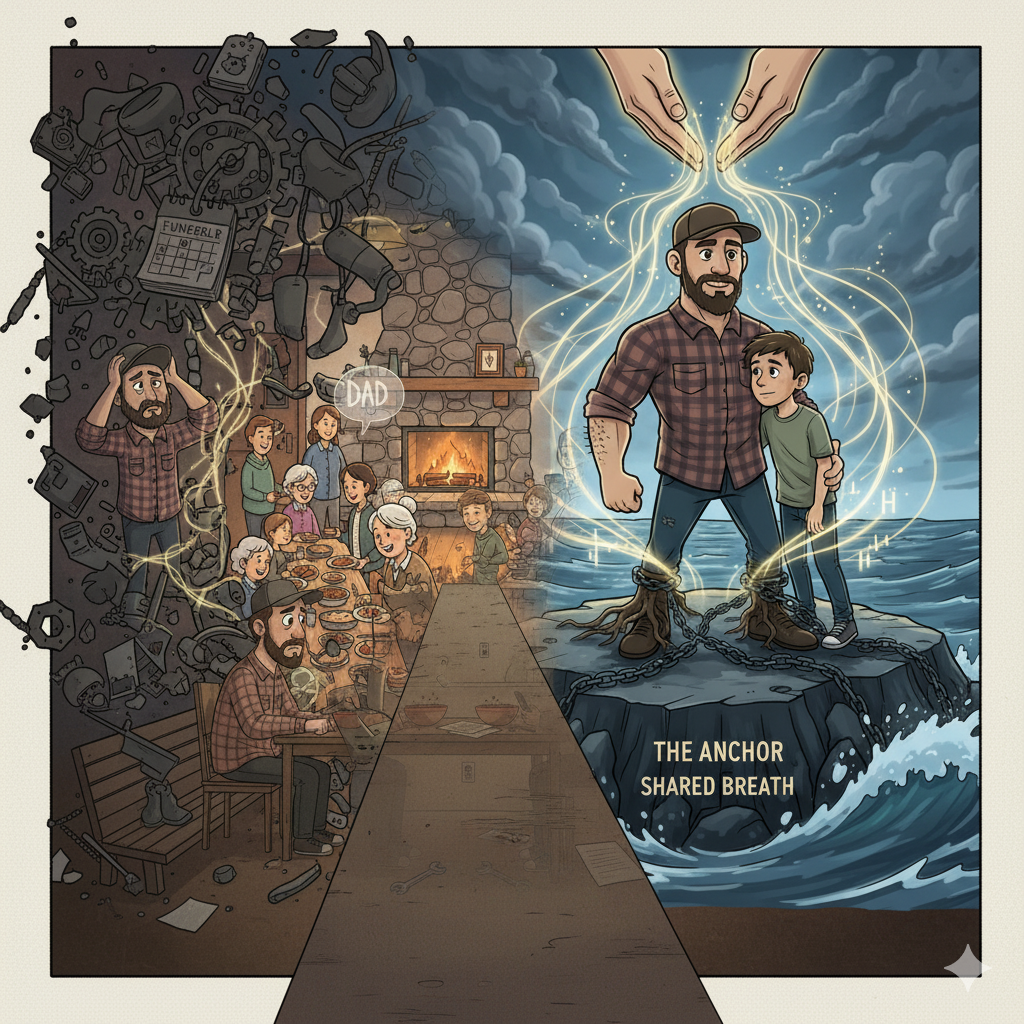
💔 The Kind of Betrayal That Breaks You
When “In Sickness” Means “Bail Out”
I have spent a great deal of time over the past decade keeping this story locked away. It is one of those deeply personal traumas that feels too ugly, too raw and too profoundly unfair to simply air out. Yet the weight of it, even 10 years later, is crushing, and it has become necessary to finally put it into words. This is not simply a story about a divorce. This is an examination of what happens when life throws an impossible mountain at a person, and the people who swore to stand with him decide that carrying a shovel is too much work. This is the story of abandonment when I was already sinking.

The Perfect Storm and The Collapse
Do you know what it feels like to finally crack? It was not a single event; it was a devastating cocktail of stressors that hit simultaneously. My grandfather died, adding a layer of grief and responsibility right when I was already dealing with a new, aggressive professional challenge, a new young daughter at home, and the seismic physical and mental shift of quitting a 20-year smoking habit. Then came the sickness: the diagnosis of a thyroid disease that fundamentally changed my health. My body and mind were under a sustained siege. I was stressed, sick and desperately scrambling to adjust. I needed support. I needed a partner. I needed family.
What I received instead was a clear path to the exit. The commitment “in sickness and in health” felt like a cruel joke. As I began to truly struggle, my ex-wife did not just leave; she fled. And her family, instead of offering a moment of compassion or encouraging assistance, rallied around her decision to abandon a man who was gravely sick and in need of care. This betrayal was not confined to a marriage. It spread like poison, destroying my core relationships. The ultimate devastation was discovering my ex-wife was dating my former best friend. A man I trusted, a man who saw me at my lowest, chose to capitalize on my collapse. That kind of profound betrayal warps a person’s view of human connection forever. My own brother disowned me, removing himself entirely when I needed a family member most.

The Lingering Scar of Separation
The most unbearable and lasting injury is the alienation from my children, an ongoing trauma that defines my current reality. Ten years after the collapse, my oldest son has lived with me for approximately five years. The transfer was hairy and difficult, but it is done. Yet, hearing him not call me “Dad” is the quiet, lingering echo of that original family breakdown. He lives under my roof, but that fundamental, simple word remains unsaid. This is the real, daily consequence of the indifference shown by the family who left me.
Life together is far from easy. He and I have both had problems that brought us into contact with the police on a number of occasions. It is a constant struggle, marked by the complexities of deep emotional injury, inherited behavioral issues, and the stress of repeated conflicts with authority. We are both products of the destruction that occurred a decade ago. It is a reminder that the failure of family to anchor itself during crisis doesn’t just hurt the adults; it sets the next generation on a difficult course. The indifference shown by my ex-father-in-law, who was solely focused on taking back a possession—a boat—the moment the divorce papers were filed, acted without regard for my son’s well-being, and that legacy of neglect lives with us every day. I remember the day he was taken away, screaming, and how they simply let him scream. That sound is a scar, and it is a scar we are both carrying now. True family is revealed in the struggle.
⚓️ What Family Really Is: The Anchor of Shared Breath
The pain of abandonment strips away all the romanticized notions of kinship and reveals the absolute truth of what family must be. It is not defined by biology or a legal document; it is defined by anchorage when the sea is rough. I am, by nature, a hard lover and an intelligent person. I approach the world with a deep, clear-eyed empathy, recognizing the complexity and pain in others. This capacity to put myself in another person’s shoes—to know what it means to be broken—is precisely why the betrayal cut so deep.
In Minnesota, we understand that connection is not just a suggestion; it is the rhythm of life. It is rooted in the shared experience of the harsh winters and the intentional commitment to showing up for one another. Family is the potluck principle. When one person is too exhausted or sick to cook, others bring the food. They do not merely ask if you need help; they show up with a hot dish and a warm blanket. This is the bedrock of community: shared load, shared nourishment, no questions asked. It is the moment after the church service, over coffee and conversation, where we slow down and actually see each other. It is the intentional gathering during the holidays, recognizing that the light shines brightest when we huddle together. The church is family, and family is in the home. The home, whether physical or spiritual, is where the vital work—the making of love, support and acceptance—takes place.
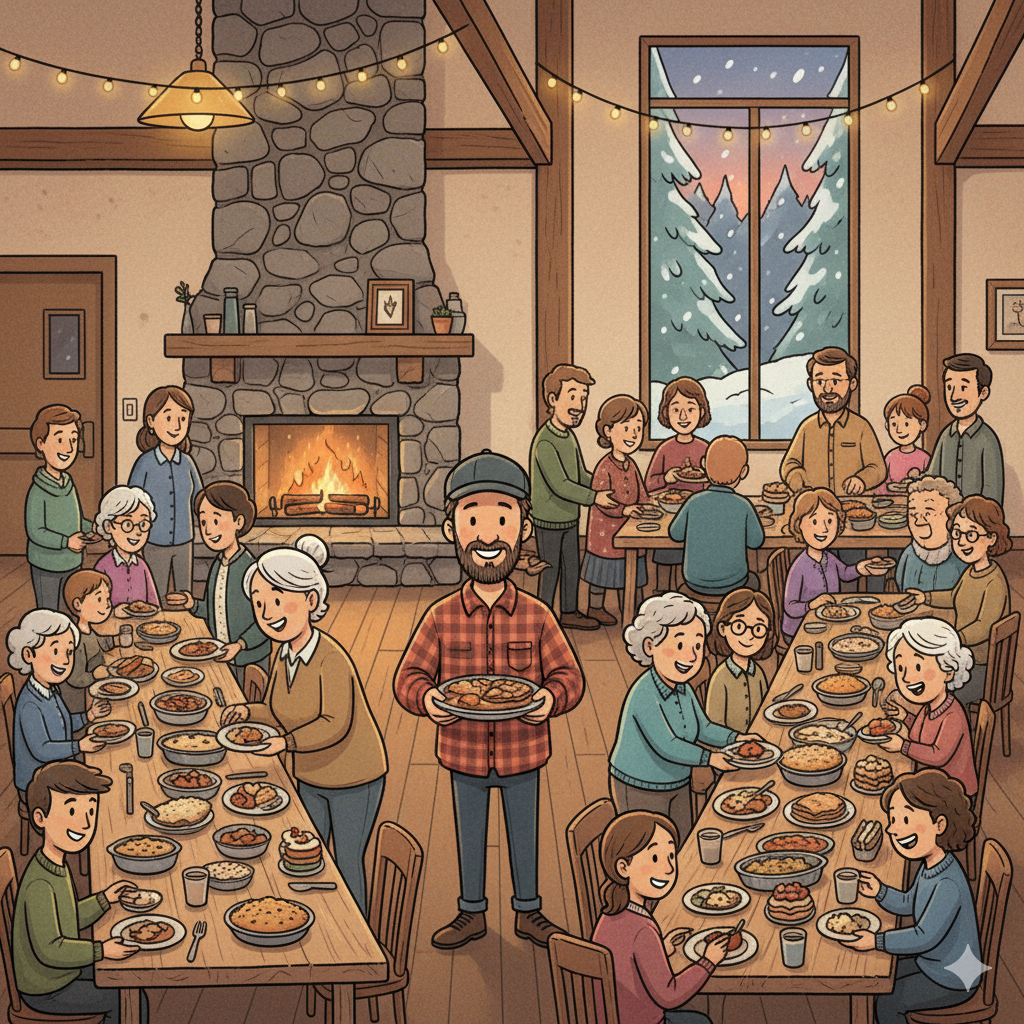
This brings us to the most essential truth, the ancient wisdom that transcends geography: We all share breaths. This is the core concept of Māori philosophy, where the traditional greeting, the Hongi, involves pressing noses and foreheads to share the Hā, the very breath of life. To share breath means to understand that when one person struggles, their breath is shallow, their life force diminished. The true measure of family is how you respond to that.
Family does not bail. When someone is sick, confused or “out of sorts,” family does not run for the hills. They do not view a temporary illness or a period of mental strain as a reason to terminate the covenant. They recognize the shared vulnerability of the human condition. A hard lover does not just offer sympathy; he offers solutions. He helps you find the doctor, drives you to the appointments and sits with you in the quiet moments of despair. True family embodies the belief that the home, the relationship, is where love is made through difficult, persistent effort. Betrayal is the act of denying that shared breath, of deciding that one person’s oxygen is too valuable to share with the struggling person next to them. The lesson burned into me is this: Family is the people who stand with you in the crucible. They are the ones who reflect your own intelligence and empathy back at you, acknowledging that we are all just a moment away from needing the same grace. They are your anchor. They are your shared breath.
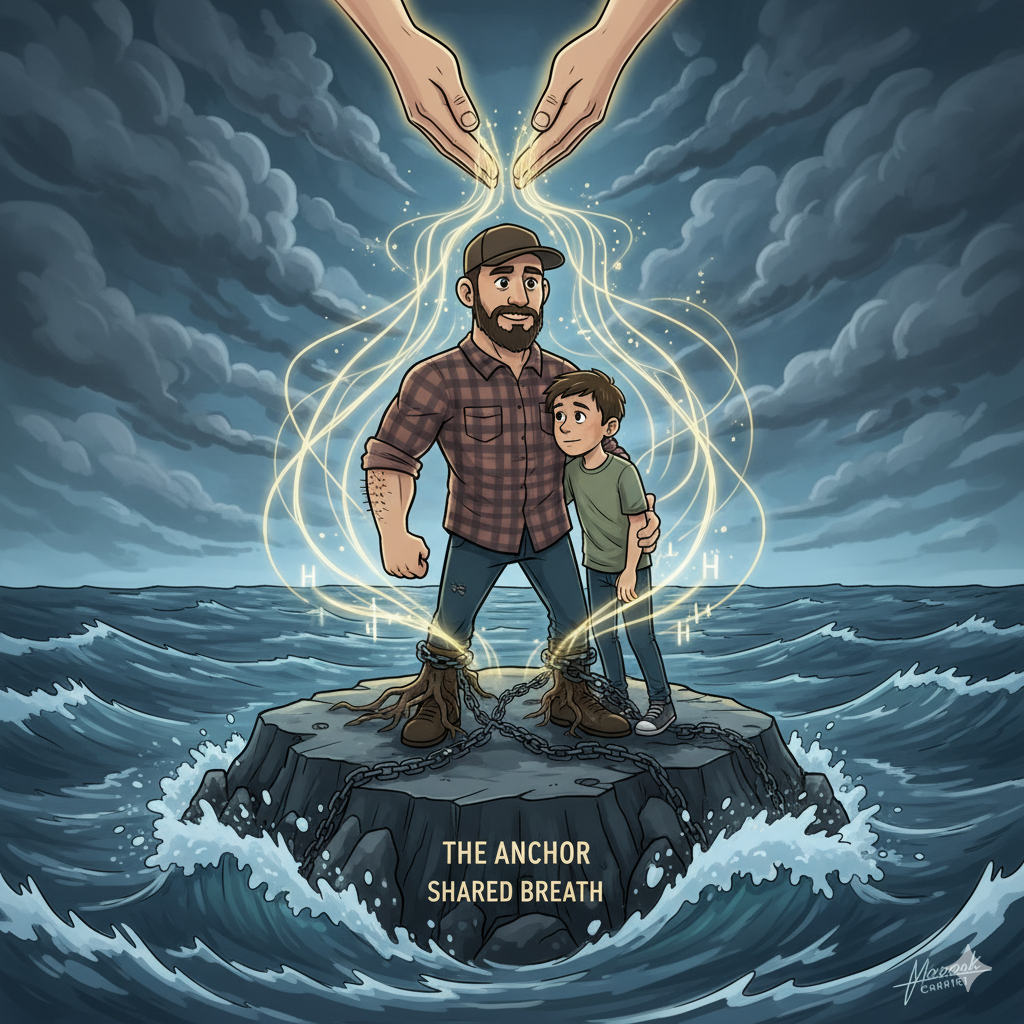
-
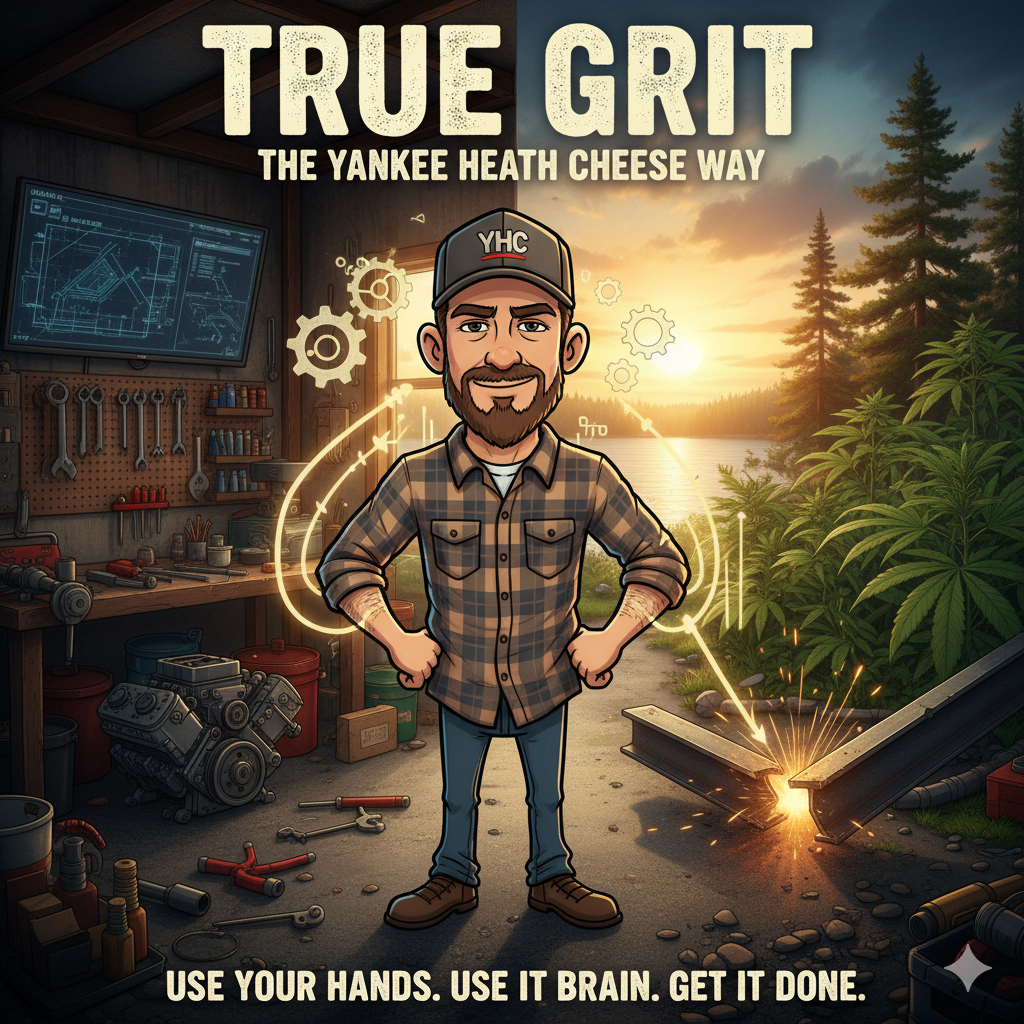
True Grit and the Art of Getting It Done

The Gospel According to Yankee Heath Cheese
Listen up, because what I’m about to lay out isn’t just about a couple of days on the calendar; it’s a blueprint. It’s the very essence of what it means to be American, to live by a code of self-reliance, ingenuity, and a pure, unadulterated “get it done” attitude. It’s the gospel according to Yankee Heath Cheese, and it’s called True Grit.
The world, these days, it’s always trying to sell you a solution. Pay someone. Buy new. Call a professional. That’s for the soft hands, the folks who’ve forgotten the satisfaction of making something work with your own two hands, your own two brain cells, and a healthy dose of stubbornness. True Grit isn’t found on a credit card; it’s forged in the frustration of a broken thing, the challenge of an impossible task, and the sheer will to stare it down and say, “Not today, problem. Not today.”
Take this past weekend. A perfect microcosm of the Yankee Heath Cheese existence. Saturday was supposed to be a regular chore: putting away the 17-and-a-half-foot fiberglass ski boat. Sounds simple enough, right? Except the trailer was totaled. Bent nearly in half from some previous unseen catastrophe. Most people would call it a write-off. They’d pay five grand for a new trailer, then another grand to have some shop transfer the boat. Not me.
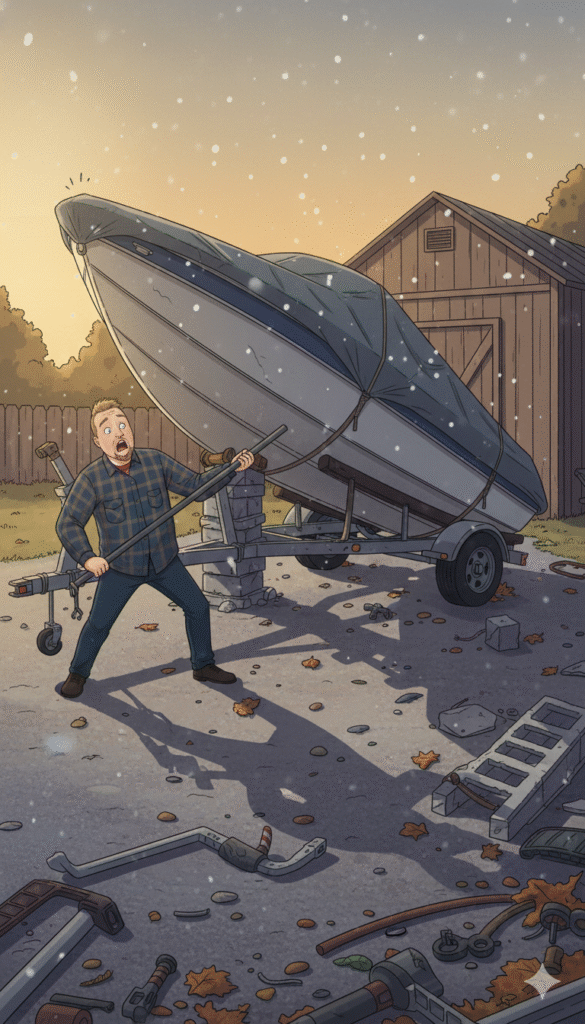
No, True Grit kicks in when you’re looking at that scenario, and your brain starts firing not with despair, but with questions: How can I lift it? What can I brace it with? Where’s the leverage? That boat, mind you, is a beast. But with a strategic arrangement of cinder blocks, a trusty car jack, and pure brute force, I began the dance. Inch by agonizing inch, the boat went up, the mangled old trailer slid out. And yeah, there was a moment – a heart-stopping, stomach-dropping moment – when she went cattywampus. Teetering. Listing. A near disaster. Most would panic. But True Grit is about calm in the chaos. It’s about assessing the immediate threat, finding the new center, and painstakingly, painstakingly righting the ship. Literally. That wasn’t just physical labor; that was a masterclass in improvisational engineering, relying solely on my own existence to prevent a total loss.
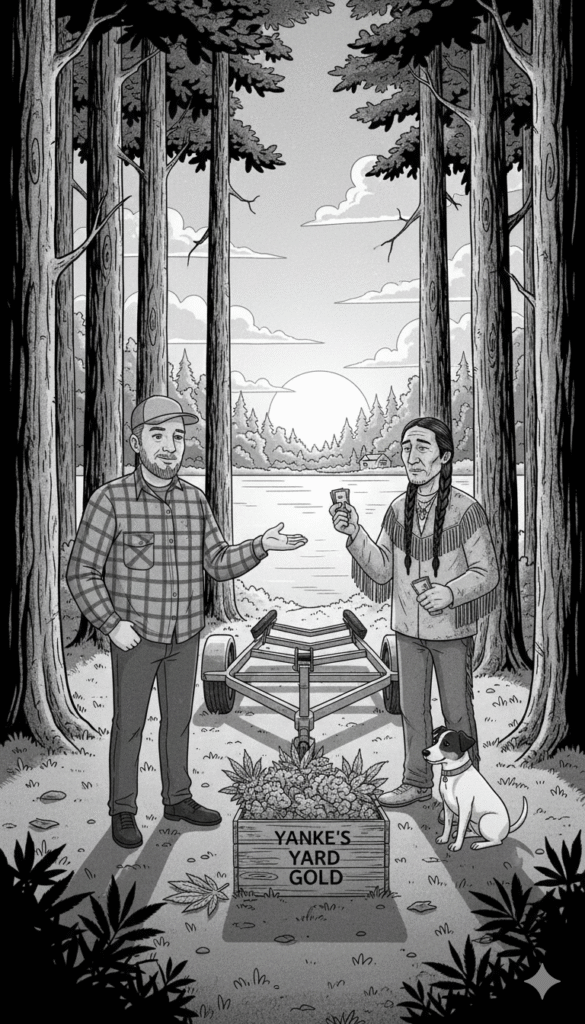
And the new trailer? Money was tight, naturally. Being poor but crafty isn’t a badge of shame; it’s a source of pride. Found a decent used trailer, but instead of cash, I brokered a trade: some of my prime yard-grown cannabis. A cost-neutral exchange, fueled by self-sufficiency. That’s ingenuity. That’s seeing value where others see only expense. That’s American resourcefulness, pure and unadulterated. That boat now sits proudly on its new cradle, ready for the thousand-plus lakes of Otter Tail County next summer, a testament to what you can achieve when you refuse to be defeated by circumstance.

Then came Sunday. Woke up, ready for church, only to find the garage door completely busted. Again, the easy route would be a costly service call. But True Grit says: figure it out. After a walk with the dogs by Pebble Lake to clear the head and a plate of chili cheese dogs to fuel the body, I delved into the repair. Fabricating parts from scrap sheet metal, using self-tapping screws – it was ugly, it took time, it took thought, but it worked. It’s the satisfaction of knowing you prolonged the life of something, you kept your shelter secure, all with what you had at hand.
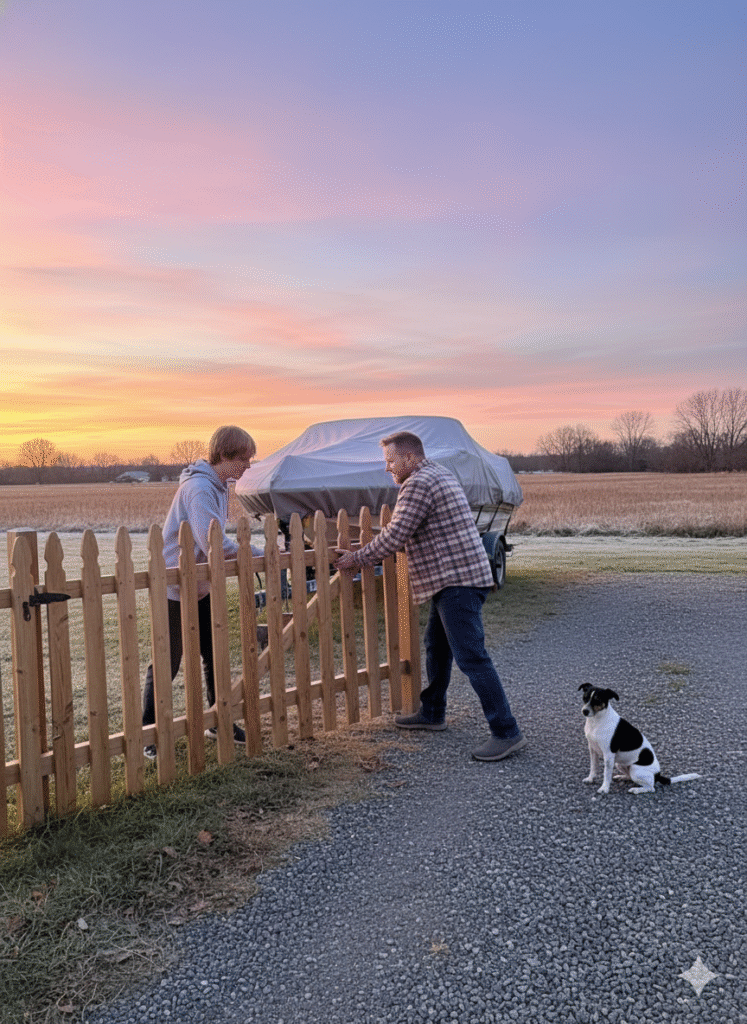
Later, my son and I were out taking down the fence, getting the other boats tucked away because “in-town” rules demand it. Even with help, it’s a grind. But it gets done. And when the peace finally settled, under the dim light, the towering 10-foot cannabis plant from the yard called. That’s a giant, a testament to patient cultivation. Chopping it down, breaking it into branches for processing – another big task, another symbol of self-reliance, of providing for your own, on your own terms.
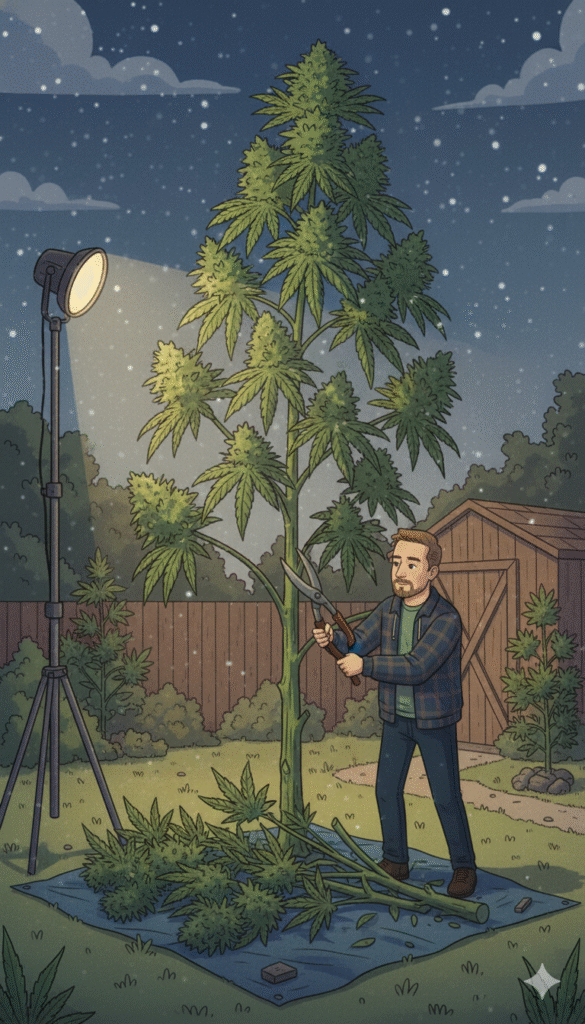
This is what it means to be Yankee Heath Cheese. It’s about using your hands, using your brain. It’s about an unwavering belief in your own ability to overcome, to adapt, to create solutions where others see only problems. It’s about the raw, beautiful truth of being an American who truly relies on his own existence, who finds strength in his resourcefulness, and who, no matter the challenge, always, always gets it done. That’s True Grit. That’s living.
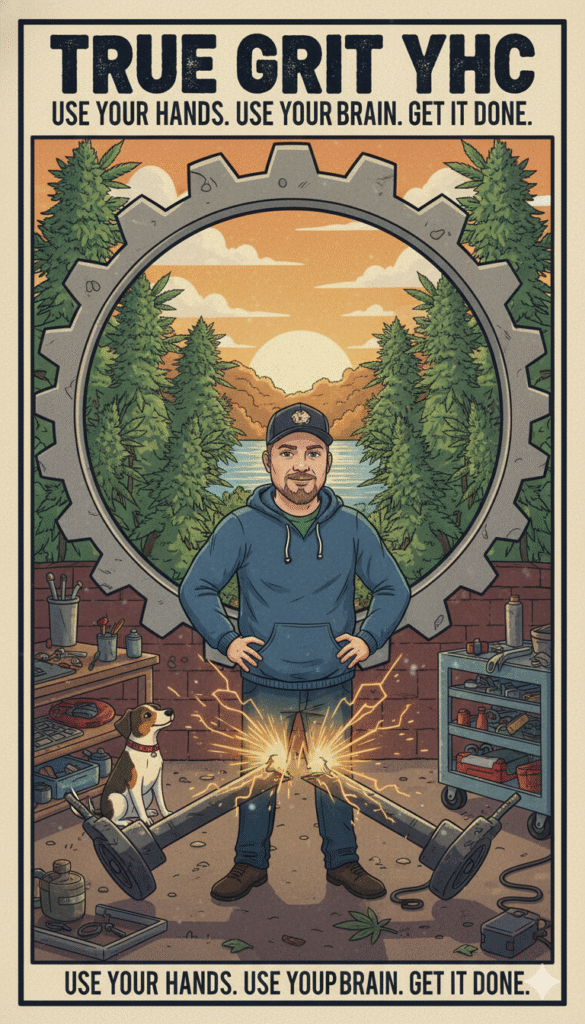
-

Exercise by Yankee Heath Cheese: Real Work, Real Strength, Real Life
Forget the treadmills and the spin classes. For Yankee Heath Cheese, true exercise isn’t found under fluorescent lights; it’s forged in the wild, under an open sky, with mud on your boots and the satisfying burn of muscles earned through honest effort. My body isn’t sculpted by repetitions for the sake of it; it’s built by doing. It’s a functional strength, honed by the relentless pursuit of what makes life worth living.
This isn’t about fitting into a smaller pair of jeans (though, pushing 200 pounds and staring down pre-diabetes, that’s certainly part of the motivation these days). This is about the capacity to *do*, to engage, to wrestle with the natural world and come out on top. It’s about the kind of fitness that lets you haul a cooler full of mushrooms out of a forest at dusk, or fight a 40-pound sturgeon without blowing out your back.
Let’s break down the Yankee Heath Cheese workout:
**1. The Forager’s Marathon:**
You want cardio? Try foraging. When I head into the woods, a “five-mile trail walk” easily becomes a ten-mile labyrinth. You don’t stay on the beaten path when you’re hunting for morels or chanterelles. You zigzag, you veer off, you climb over fallen logs, you squat low to inspect a patch of moss. It’s a constant, low-impact, high-endurance trek over uneven terrain that engages every stabilizing muscle in your legs and core. Your eyes are constantly scanning, your brain is engaged, and your body is in perpetual motion. It’s a mental and physical workout all rolled into one, and the reward is a bounty from the forest floor.**2. The Mushroom Haul:**
Once you’ve found those treasures, the real strength test begins. Carrying a heavy pack full of freshly picked mushrooms—sometimes multiple large grocery bags or even coolers—out of the forest is a full-body experience. Your shoulders burn, your back muscles engage to stabilize the load, and your legs, already tired from miles of zigzagging, have to propel you up and down inclines. It’s not just lifting; it’s *carrying* through obstacles. This builds the kind of practical strength you don’t get from lifting barbells in a straight line.**3. Angler’s Athletics:**
Fishing, for me, isn’t a passive sport. It’s incredibly dynamic.
* **Casting:** Hours of repetitive casting, whether with a heavy baitcaster for pike or the delicate whip of a fly rod, builds shoulder endurance and core rotational strength. Each cast is a mini-explosive movement.
* **Boat Handling:** My old Starcraft might not be a yacht, but pushing it around the dock, starting the motor, running it, pulling it up ramps, or pushing it back down—that’s all real work. It’s leverage, muscle, and knowing how to move weight.
* **Fighting Giants:** This is where the full-body workout truly kicks in. When you’re consistently hooking into a **10-pound walleye, a 20-pound pike, a 30-pound carp, a 40-pound sturgeon, or a 50-pound catfish**, it’s a battle. The rod bends, the drag screams, and you’re grinding, reeling, holding, and moving with the fish. Your legs brace against the boat, your core twists, your back muscles lock down, and your arms ache with the sustained pressure. It’s an unpredictable, high-intensity interval training session against a living, powerful adversary. You feel it in your quads, your lats, your biceps—everywhere.For Yankee Heath Cheese, exercise isn’t a chore; it’s an outcome. It’s the physical toll of a life lived actively, purposefully, and deeply immersed in the outdoors. It’s the strength born from providing for yourself, exploring the wild, and fixing what’s broken. When I’m hauling a cooler of fungi, or wrestling a monster fish to the boat, I’m not “exercising.” I’m just living. And in the process, I’m building the kind of robust, functional body that can handle whatever challenges—or giant fish—the world throws my way.
-

Emerging from the Haze: Two Weeks Out of the Fog
The clock ticks past 5 PM, and for the last decade, that chime was usually my cue. Time to crack the first beer. Or maybe the second. Three to eight brews, every night, like a ritual. A comforting hum that would eventually turn into a dull throb. Ten years. Ten years since my Grandpa Lavern passed, and somewhere in the quiet devastation of losing that man—that patient, curious mentor who taught me how to graft a sapling, how to wire a thermostat, how to lay brick, and how to outsmart a northern pike on Six Mile Lake—the fog began to roll in.
For a long time, it felt like a necessary haze. A buffer between me and the sharp edges of the world. It blurred the disappointment of a job hunt that felt like shouting into a void. It numbed the sickening fear that still clutches my gut every time I think about my dad’s cancer scare. It softened the edges of regret about missed moments with my kids, even knowing they were living with their mom. Life felt like a relentless uphill climb, and the beer was the heavy, comforting blanket I’d pull over my head each night.
But two weeks ago, I pulled that blanket off.
Two weeks. Fourteen days. It feels like a lifetime and a blink all at once. The last time I went this long without a drink was when COVID laid me low four years back, and that was enforced. This time? This is a choice. A hard, deliberate shove against a habit that had become as much a part of my identity as the grease under my fingernails or the faint scent of lake water on my skin.
Coming out of the fog is… disorienting. It’s like emerging from a long, dreamless sleep into a world where all the colors are suddenly brighter, the sounds sharper, and the smells more intense. Some of those sensations are beautiful – the crisp, clean air after a rain, the subtle earthy-sweet aroma from my drying cannabis plants (that volunteer I almost lost, now trimmed and curing), the clarity in Bella’s eyes. But some are jarring. The anxiety about finding work now hits with a fresh, unblunted edge. The worry for my dad feels more acute. Everything is just more.
And that’s the point.
This isn’t some spiritual awakening born of calm reflection. This is born of raw, desperate motivation. My body, like my old Starcraft, needs some serious restoration. Pushing 200 pounds, a diagnosis of pre-diabetes, and then my sister getting hit with full-blown diabetes on top of my own thyroid issues… the writing’s on the wall, etched in stark, undeniable letters. If I don’t make some drastic changes, this old rig isn’t going to run much longer.
Grandpa Lavern wouldn’t have stood for it. He taught me to be curious, to learn, to fix what’s broken. And right now, parts of me are definitely broken.
So, this is the first step. The first big push off the shore. The job hunt still grinds, the worry for Dad still sits, but I’m meeting them head-on, without the haze. The clarity is intense, sometimes overwhelming, but it’s also empowering. I’m rediscovering the quiet hum of my own internal engine, listening to it, trying to tune it up.
The cannabis garden, my meticulously managed rows of Don Carlos, White Widow, Purple Punch, Granddaddy Purple, and Sour Diesel, stands as a living testament to patience and focused effort. It reminds me that growth takes time, consistent care, and protection from unseen threats – whether it’s frost or something else entirely. Growing openly, proudly, it reflects the man I’m trying to become: clear-eyed, present, and fully engaged.
Two weeks. It’s a start. A small victory in a much larger battle. And tomorrow, I’ll wake up, hopefully still clear-headed, and keep casting. Because the real catch isn’t just a fish or a job; it’s reclaiming the full, vibrant spectrum of life, one clear moment at a time.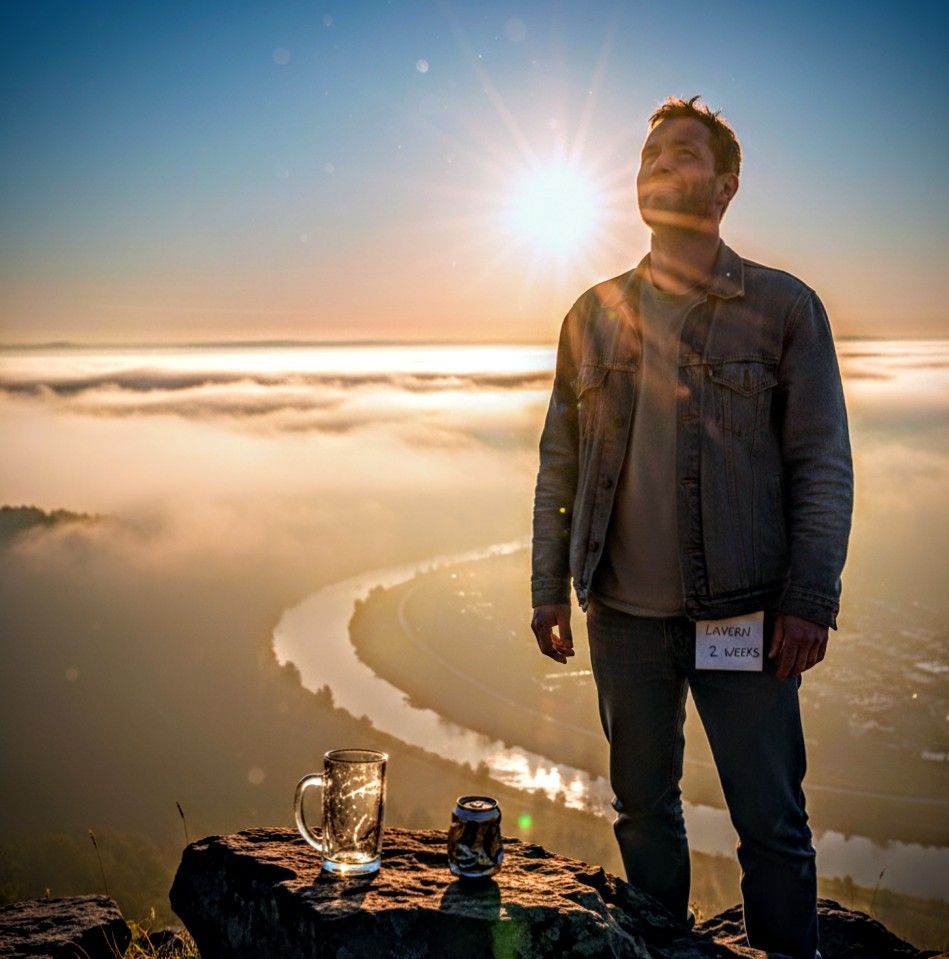
-

The Key Clacks – health scares and unemployment in 2025

A sick old man lies in bed
The key clacks and the screen glows with the same list of jobs that were there yesterday, and the day before. “Entry-level” positions that want ten years of experience. “Urgent hire” that never emails you back. It’s been a month of this, a month of feeling like you’re shouting into a void. The savings account dwindles, and a quiet, static dread starts to hum under the surface of everything.
So you walk away from the screen. The cure, or at least the anesthetic, is in the garage. Asphalt therapy. Twisting the throttle, the engine’s growl is the only voice that makes sense, drowning out the buzz of self-doubt. The roads around Fergus Falls blur into a watercolor of turning leaves, the gold and rust of late September. You’re not going anywhere, not really. You’re just outrunning the stillness, scouting the edges of lakes you’ve known your whole life, looking for drop-offs and weed lines from the seat of a motorcycle. It feels like doing something. It’s almost enough.
But the real quiet is out on the water.
You back the old Starcraft down the ramp, the one you spent a year restoring. Every patch on the aluminum, every coat of paint, every wire you ran to the little two-stroke—it’s a testament to a time when your effort produced a tangible result. It floats, it runs. It works. Unlike you.
The hum of the outboard is a low thrum as you cut across the lake. You kill the engine in a cove where the trees hang low, their branches just starting to go bare. And in the silence that rushes in, the real monster surfaces. Not the musky you dream of, but the one that lives in your phone.
The phone call. The words your dad said, trying to sound steady. “The doctors found something.” A scare, they call it. A polite word for a black hole that opens up in the middle of your life. A word for waiting. For scans, for biopsies, for the next call that will split your world into a new ‘before’ and ‘after’. You’re unemployed and adrift, and the one man who has always been your anchor, your absolute north, is facing his own storm. The helplessness of it is a physical weight, heavier than any anchor.
You pick up the rod, your hands moving on autopilot. The muscle memory of a thousand casts. The lure flies out, a silver flash against the grey sky, and lands with a soft plip. The retrieve begins. It’s a rhythm, a meditation. A prayer without words. For a job. For your dad. For a single, solitary bite that can pull you out of your own head for just one second.
For an hour, nothing. Just the silence, the dread, and the rhythmic cranking of the reel. You feel the depression settling in again, a cold, damp blanket. You think about packing it in. What’s the point?
And then, the line goes tight.
Not a nibble, but a violent, electric jolt that shoots up the rod and into your bones. The drag screams. It’s not a panfish. It’s something with weight, with fury. For the next few minutes, nothing else exists. There is no job hunt, no hospital waiting room, no dwindling bank account. There is only the bend in the rod, the tension in the line, and the raw, thrashing power of a big northern pike on the other end. It’s a battle of wills, a brief, violent connection to something wild and utterly alive.
You work it to the side of the boat, a long, lean torpedo of muscle and teeth. You net it, water and slime splashing over the gunwale. Bringing it aboard, you look at it. The ancient, spotted pattern. The cold, predatory eyes. This creature doesn’t worry about tomorrow. It is a perfect engine of survival, and for a moment, you held onto its power.
You gently work the hook free from its jaw and slide the big fish back into the water. With a powerful kick of its tail, it vanishes into the dark, leaving only ripples.
The sun is low now, painting the clouds in bruised shades of orange and purple. The problems are all still waiting for you on shore. The boat ramp leads back to the same reality. But something in you has shifted. The heavy blanket feels a little lighter. The helplessness hasn’t vanished, but it’s joined by the memory of the fight.
You can’t fix your dad’s health. You can’t force an employer to call you back. But you can restore a boat. You can read a lake. You can fight a fish and let it go. You can endure.
You start the engine. The sound is small against the vast quiet of the lake, but it’s there. It’s the sound of going on. The fight isn’t over. Not on the water, and not on land. But for the first time in a month, it feels like you’re holding the rod right. And tomorrow, you’ll cast again.
-
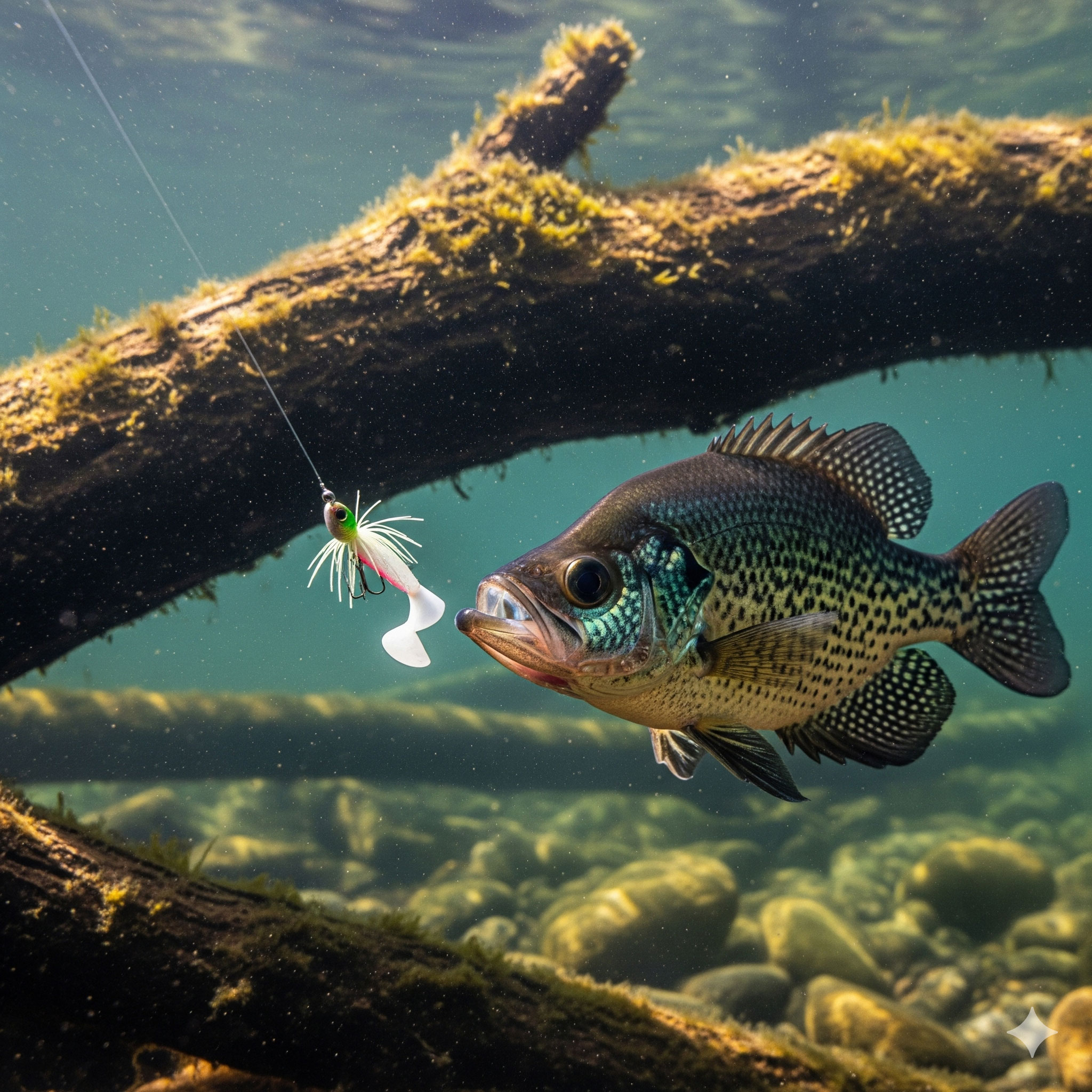
Late Summer Slabs in Otter Tail County
Cracking the Code: A Guide to Late-Summer Crappies in Otter Tail County’s Shallow Basin Lakes
The late summer period in Otter Tail County, a region boasting over 1,000 lakes, presents a unique and often overlooked opportunity for crappie fishing.1 While many anglers believe the bite has died with the “dog days” heat, the truth lies in understanding the distinct ecology of the region’s shallow basin lakes.3 These “dish bowl” fisheries operate on a different set of rules than their deeper, stratified counterparts.4 This report will dissect the behavior of late-summer crappies in a model 888-acre basin, providing a strategic blueprint for locating and catching them in both the expansive, weedy main lake and its cooler, spring-fed backwaters. This analysis moves beyond conventional wisdom to reveal how subtle changes in water temperature, weed growth, and forage dictate where these elusive panfish live and how they feed.
The World of the Shallow Basin Crappie: Understanding the Environment
The key to unlocking the late-summer crappie puzzle in Otter Tail County is not just knowing what to do, but why a specific approach is necessary. The unique limnology of a shallow basin lake dictates everything from fish location to feeding behavior.
The Shallow Lake Defined
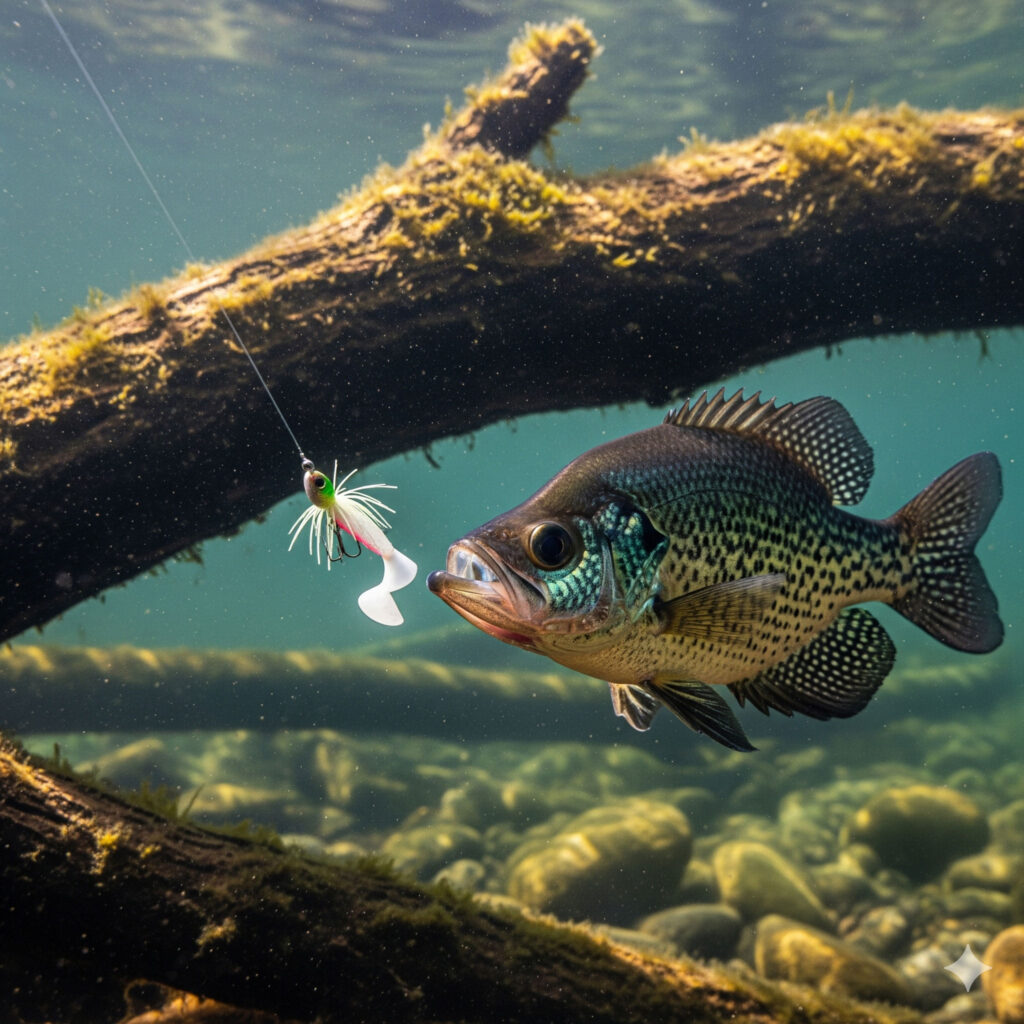
According to the Minnesota Department of Natural Resources (DNR), a shallow lake is defined as having a maximum depth of 15 feet or less, or a basin where 80 percent or more of the lake area is littoral—the zone shallow enough to support rooted aquatic plants.5 Our 888-acre model lake fits this description perfectly. These lakes, common throughout Otter Tail County’s prairie and transitional ecological zones, are fundamentally different from the deep, clear, rock-structured lakes found farther north.7
The Absence of a Thermocline
The single most important factor influencing late-summer crappie behavior in these lakes is the typical absence of thermal stratification. Deeper lakes, during the summer, separate into distinct layers: a warm, oxygen-rich surface layer called the epilimnion, and a cold, often oxygen-poor bottom layer called the hypolimnion. These are separated by a transitional layer of rapidly changing temperature known as the thermocline.9 In many regions, summer crappies retreat to the cooler, oxygenated water just above or within this thermocline.11
However, shallow basin lakes often remain isothermal, meaning the water temperature is relatively uniform from top to bottom. Their limited depth allows wind action to mix the entire water column throughout the summer, preventing stable layers from forming.8
Implications of an Isothermal Lake
This lack of stratification creates a completely different set of environmental conditions. With no deep, cool, oxygenated water to retreat to, crappies cannot escape the warm surface temperatures, which can easily exceed 75°F in late summer.11 This forces them into an alternative survival strategy. While their metabolism is high in the warm water, the heat can also make them lethargic.3 Consequently, they seek refuge not in depth, but in shade and cover that offer the coolest available micro-habitats.16
This forces a complete paradigm shift in how an angler must think about locating summer crappies. The standard logic of “go deep in the summer” is rendered ineffective. The absence of a thermal refuge at depth is the direct cause of a behavioral adaptation in these fish. Instead of relating to deep structure, they become a weed-oriented species for much of the year, behaving more like largemouth bass in other systems. The most abundant and effective form of cover and shade in a shallow, fertile lake is its aquatic vegetation. This explains why seasoned local guides in Otter Tail County report that their most reliable summer patterns involve targeting crappies on cabbage edges in 6 to 12 feet of water—a depth that would be considered exceptionally shallow for summer crappie in many other regions.18 The limnology of the lake dictates a different set of rules, making a weed-centric approach a necessity, not just a preference.
The Dominance of Weeds
Because sunlight can penetrate to the bottom across most of a shallow basin lake, these environments typically support lush and expansive aquatic plant growth, often extending from shore to shore.5 In Minnesota’s shallow lakes, cabbage weed (
Potamogeton) is a particularly crucial habitat component.18 These vast weedbeds become the primary form of structure in the lake. They provide critical shade from the summer sun, release oxygen through photosynthesis, and create countless ambush points from which crappies can attack the schools of young-of-the-year baitfish that also use the weeds for cover.16 In late summer, the crappie’s world revolves entirely around these weed edges, pockets within weed flats, and any other cover that offers a thermal advantage and a steady supply of food.18
The Main Lake Hunt: Strategies for the Weedy Basin
Applying this ecological understanding to the main body of the 888-acre lake requires a systematic approach focused on dissecting the vast weed-choked basin to find concentrations of fish.
A. Locating High-Percentage Zones
Not all weeds are created equal. The most productive areas will have specific characteristics that concentrate crappies.
- The Deep Weed Edge: This is the primary structure for late-summer crappies. Schools of fish will patrol the outside edges of large cabbage and coontail beds where the vegetation ends and the deeper, open basin begins.18 The key is to find the greenest, healthiest weeds, as these provide the most oxygen and robust cover.18 Local Otter Tail County guides confirm this is a highly reliable summer pattern, focusing specifically on cabbage edges in 6 to 9 feet of water.18 Inside turns and points along these weedlines are particularly good spots to investigate.
- Isolated Cabbage Patches: Anglers should not focus exclusively on the main, continuous weedline. Using sonar to scan the open basin adjacent to the primary weedbeds will often reveal isolated clumps of cabbage. These patches, especially those growing on or near small underwater humps or points, act as crappie magnets, concentrating fish away from the larger, more obvious structures.19
- Rock and Weed Combinations: Any location where a rock pile, gravel bar, or other hard-bottom feature intersects with a healthy weedbed is a prime target.4 This combination of hard and soft structure creates diverse habitat that holds multiple types of forage, from crayfish to minnows, and consistently attracts larger-than-average crappies.26
- “No Man’s Land” – The Open Water Connection: A subtle but potent pattern involves crappies that suspend in the open water basin, adjacent to the main weedline.27 These fish are nomadic, following roaming schools of baitfish. They are often overlooked by anglers who remain fixated on the visible weed edge. This pattern can be discovered by slowly motoring from the weedline out into the basin while closely watching electronics for suspended marks, which often appear as clutter or distinct arcs 5 to 15 feet down over bottom depths of 12 to 30 feet.27
B. The Late-Summer Arsenal: Downsizing and Matching the Hatch
Fish in the late summer can be lethargic due to the warm water, and they are frequently feeding on the abundant but small young-of-the-year baitfish and aquatic insects.3 This makes downsizing the presentation a critical tactical adjustment.
- The Logic of Small Baits: The adage “match the hatch” is paramount. Big, aggressive presentations that worked in the spring will often be ignored. The consensus among experienced anglers points to 1/16 oz and 1/32 oz jig heads as the most effective sizes for late summer.3
- Lure Selection:
- Plastics: Small, 1.5- to 2-inch soft plastics are the workhorses. Paddletails, grubs, or baits that imitate small shad are ideal.23 Given that late-summer fishing can produce large numbers of fish from a single school, lure durability is important. Tough plastics like those made by Z-Man are often recommended over softer baits that tear easily after a few fish.23 Color selection should be dictated by water clarity. In the clear to moderately stained water typical of many Otter Tail County lakes, natural and translucent colors like smoke, pearl, and baitfish patterns are excellent choices. In darker or more turbid water, brighter colors like chartreuse and pink, or dark, contrasting colors like black/chartreuse, provide better visibility.11
- Live Bait: A small crappie minnow remains one of the most effective offerings, especially when the bite is tough or the fish are finicky.4 It can be tipped on a jig to add scent and a natural profile, or fished alone under a slip-bobber for a subtle presentation.
- Search Baits: Small spinners (like the Beetle-Spin) or tiny crankbaits can be effective tools for covering water and locating active fish, particularly when trolled over the tops of submerged weeds or along the deep weed edges.19
C. Presentation is Everything: Three Key Techniques
Once promising locations are identified, success hinges on presenting these small baits effectively.
- 1. Slow-Trolling the Edges: This is a proven and efficient tactic for searching the vast weed edges found in Otter Tail County’s basin lakes.18 Using a bow-mount electric trolling motor, anglers should move at a slow speed, typically between 0.8 and 1.0 mph, precisely following the contours of the deep cabbage line.18 The setup is simple: a light spinning rod with 4- to 6-pound test monofilament line spooled on the reel.3 A 1/16 oz or 1/32 oz tube jig or paddletail is trolled behind the boat.18 The depth of the lure is controlled by a combination of boat speed and the amount of line let out. A good starting point is to make a long cast directly behind the boat and then let out a bit more line.27
- 2. Casting and Counting: When a school of crappies is located on sonar—often appearing as a vertical stack of marks on a weed edge—it is time to stop and fish them precisely.23 The boat should be positioned a cast’s length away using an anchor or a GPS-enabled spot-lock feature. The technique is methodical: cast the 1/16 oz jig past the school’s location. As the jig sinks on a semi-tight line, count it down (“one-one-thousand, two-one-thousand…”). Begin the retrieve at different counts on subsequent casts until the depth of the most active fish is determined.23 The retrieve itself should be a slow, steady swim, or a gentle “sweeping” motion created by pulling the rod tip rather than just turning the reel handle.4
- 3. The Slip-Bobber Solution: The slip-bobber is the ultimate tool for presenting a bait at a precise, controlled depth to suspended or cover-oriented crappies, and its importance cannot be overstated.22 It excels when fish are holding tight to a specific spot on a weed edge, suspended in a small pocket within the weeds, or when they are unwilling to chase a moving bait.33 A slip-bobber allows an angler to make a long cast and have the bait suspend perfectly in the strike zone, whether it’s 6 feet or 16 feet deep.22 The rig consists of a sliding knot (bobber stop), a small bead, the slip-bobber itself, and then the hook or jig. When fishing deeper water, a 1/4 oz sinker can help pull the line through the float and get the bait down to the target depth quickly.30 A key detail is to watch for subtle bites. Crappies often swim up to take a suspended bait, which causes the bobber to rise slightly or lay over on its side rather than being pulled under.30
A crucial element that ties these presentation methods together is the vertical nature of crappie schools.23 An angler might locate a school on sonar and begin catching fish at a specific depth, for instance, with a jig counted down to five seconds. After several fish, the bites may stop abruptly. A common mistake is to assume the school has moved or shut down. However, it is more likely that the active feeding members within that vertical column of fish have simply shifted their depth. The school is likely still present, but the biting fish may now be holding shallower, at a three-second drop, or deeper, at a seven-second drop. This is why techniques like “casting and counting” and the adjustable slip-bobber are not just methods of presentation; they are essential depth-finding tools for solving this vertical puzzle and staying on the bite.
Location/Structure What to Look For Primary Tactic Go-To Lures Pro-Tip Deep Weed Edge (Cabbage) Sharp drop-offs, inside turns, the greenest, healthiest weeds. Slow-Trolling (0.8-1.0 mph) 1/16 oz Tube Jig or Paddletail Follow the inside turns and points along the weedline meticulously. Isolated Cabbage Clumps Small, distinct clumps marked on sonar away from the main weedline. Casting & Counting 1/16 oz Paddletail or Grub Use Spot-Lock to hold position once a school is located and work the area thoroughly. Rock/Weed Combo Intersections of hard bottom (gravel/rock) and soft bottom (weeds). Precision Casting / Slip-Bobber 1/32 oz Jig w/ Minnow Fish the shady side of the structure first, especially during midday. Open Water “No Man’s Land” Suspended bait balls or fish ‘arcs’ on sonar 20-50 feet off the weedline. Slow-Trolling 1/32 oz or 1/16 oz Shad Plastic Vary jig weight (1/32 oz for shallower marks, 1/16 oz for deeper) to match the depth of suspended fish. The Backwater Advantage: Fishing the Spring-Fed Refuges
The spring-fed backwaters and creek arms connected to the main lake present a completely different angling scenario. These areas are not just shallower extensions of the main lake; they are distinct ecosystems governed by the influence of groundwater.
A. The Science of the Spring-Fed Refuge
Many Minnesota lakes, to varying degrees, receive inflow from groundwater sources.35 This groundwater maintains a relatively constant, cool temperature year-round.36 During the late summer, when the main lake’s surface temperature can be a warm 75-80°F, this incoming spring water is significantly cooler. This creates localized pockets of cooler water—thermal refuges—in the backwater bays or creek arms where the springs emerge.37 Even a temperature drop of a few degrees is a powerful attractant for heat-stressed fish like crappies.38 Furthermore, these spring-fed systems tend to have more stable water levels and are often protected from the wind, resulting in calmer, clearer water compared to the main basin.36
This creates a fundamental conceptual difference for the angler. In a classic deep lake, fish seek the broad, horizontal layer of the thermocline for thermal relief. In a shallow basin lake with spring-fed backwaters, fish seek a localized, three-dimensional thermal refuge. The former is a lake-wide feature, while the latter is a specific, high-value location. This distinction is the reason an angler’s entire mindset and approach must change when moving from the main lake to a backwater. The main lake is a large grid to be searched systematically. The backwater is a series of high-probability ambush points to be approached with stealth and precision.
B. Contrasting Fish Behavior: Concentrated but Cautious
The environmental differences between the main lake and the backwaters lead to distinct fish behaviors.
- Main Lake: Crappies are often scattered along vast weed edges or suspended nomadically in the basin. Locating them requires search tactics like trolling to cover water. When a school is found, the fish can be aggressive, competing with one another for food.
- Backwaters: The thermal refuge acts as a magnet, drawing fish into a smaller, more defined area. Here, crappies are likely to be more concentrated and holding in predictable locations—directly around the spring inflow, in the deepest available holes within the backwater, or holding extremely tight to any available wood cover like fallen trees or docks.39 However, the clearer, calmer water of these protected areas often makes the fish more wary and susceptible to being spooked by boat noise or shadows.
C. Adapting Your Tactics: Finesse and Stealth
The strategic approach must shift from searching to hunting. Wide-ranging trolling is ineffective and likely to spook fish. Stealth becomes the priority.
- Silent Approach: Use a push pole, paddle, or the wind to drift quietly into casting position. Avoid using the main motor and keep trolling motor use to a minimum.
- Targeted Presentations: This is about making precise casts to specific pieces of cover.
- Vertical Jigging: If a concentration of fish is marked directly below the boat on a piece of submerged wood or in a small hole, a vertical presentation is the most direct approach. A 1/16 oz jig tipped with a plastic or a minnow can be lowered directly into the strike zone.17
- Pitching and Dipping: A longer spinning rod (10 to 12 feet) can be used as a dipping pole. This allows the angler to stay off of the cover and precisely lower a jig-and-minnow combination into tight spots around fallen trees, under overhanging branches, or next to dock pilings.39
- Slip-Bobbering Cover: The slip-bobber is once again an invaluable tool. It allows an angler to cast to the edge of a brush pile or laydown and let a minnow or jig suspend naturally in the strike zone without the boat having to be directly over the fish, minimizing the chance of spooking them.11
Variable Main Lake Basin Spring-Fed Backwaters Water Temperature Uniformly warm (75°F+) Localized cooler pockets, more stable temperature. Water Clarity Often stained or turbid from wind action and algae. Often clearer and calmer, protected from wind. Key Habitat Expansive cabbage flats, deep weed edges, isolated weed clumps. Wood cover (laydowns, docks), deep holes near spring inflows. Crappie Location Scattered along edges, suspended in open basin, nomadic. Concentrated near spring inflows and tight to specific cover. Crappie Mood Can be lethargic, but often aggressive when a school is located. Potentially more active due to cooler water, but easily spooked. Primary Strategy Searching / Covering Water Stealth / Precision Hunting Go-To Tactics Slow-Trolling, Casting & Counting, Drifting Vertical Jigging, Pitching/Dipping, Slip-Bobbering Cover The Angler’s Edge: Mastering Timing, Conditions, and Gear
Success in any angling endeavor often comes down to fine-tuning the details. Beyond knowing where to fish and what to use, optimizing the effort requires an understanding of timing, weather, and equipment.
A. Fishing by the Clock: The Low-Light Advantage
During the “dog days” of late summer, the most intense heat and brightest sunlight of midday often correspond with the slowest fishing. The low-light periods are unquestionably the prime times to be on the water.3 During these cooler windows, crappies become more active and are more likely to move shallower to feed aggressively.29 The early morning bite, from first light until around 9:00 or 10:00 a.m., is often the most productive and consistent period of the day.3 The evening bite, from late afternoon until dark, can also be excellent. On some lakes, a distinct nighttime pattern emerges where large crappies move into very shallow water, sometimes just a few feet deep, to feed along hard-bottom shorelines or near stands of bulrush adjacent to deep water.41
B. Fishing the Weather: Be a Barometer Watcher
Weather conditions have a profound impact on crappie behavior, and astute anglers can use them to their advantage.
- Cloudy Days: Overcast skies are a blessing for the summer angler. The reduced light penetration keeps crappies shallower and more active for longer periods throughout the day compared to bright, sunny, bluebird sky conditions.3
- Wind: While a strong wind can make boat control difficult, a moderate, steady wind can be beneficial. It can create a “mudline” where clear and dirty water meet, which crappies use as an ambush edge. It also pushes plankton, which in turn attracts baitfish and crappies, to the downwind side of the lake.29 Fishing wind-blown points and weed beds can be a highly effective strategy.
- Frontal Passages: Crappies are notoriously sensitive to changes in barometric pressure.42 The period of falling pressure just before a storm or weather front moves in can trigger an intense, aggressive feeding spree as fish seem to sense the impending change.29 Conversely, the period immediately following a cold front, characterized by high pressure and clear skies, often produces the toughest fishing conditions, with crappies becoming lethargic and tight-lipped.
C. Gearing Up for Finesse
The lethargic nature of summer crappies and the need for small presentations demand a finesse approach to tackle.
- Rods: A light or ultra-light power spinning rod between 6 feet 6 inches and 7 feet 2 inches in length is ideal. This provides the necessary sensitivity to detect the subtle bites common in summer and allows for casting lightweight 1/32 oz and 1/16 oz jigs effectively.23
- Reels: A small, 1000-size spinning reel is perfectly balanced for a light-action rod and handles light lines well.34
- Line: Light line is a non-negotiable component of the system. A high-quality 4- to 6-pound test monofilament is an excellent all-around choice, offering good manageability and some stretch to cushion the hookset on a crappie’s soft mouth.3 Alternatively, 8- to 10-pound test high-visibility braided line with a 2- to 3-foot fluorocarbon leader can be used. The bright braid helps in visually detecting subtle strikes, while the nearly invisible leader provides stealth.23
A Blueprint for Otter Tail County Success
The late-summer crappie bite in Otter Tail County’s shallow basin lakes is not a myth; it is a challenge that rewards the thinking angler. Success is not found by defaulting to the deep-water tactics that dominate fishing literature, but by embracing the unique, weed-driven ecosystem of these fertile waters. By understanding that the absence of a thermocline forces crappies into a shallow, cover-oriented existence, an angler can shift their focus from depth to detail. In the main lake, this means systematically searching the vast weed edges with downsized trolling and casting presentations, always ready to adjust depth to solve the vertical schooling puzzle. In the spring-fed backwaters, it means trading search for stealth, using the cool-water refuges to pinpoint concentrated but wary fish holding tight to cover. By mastering the low-light feeding windows, paying close attention to weather cues, and gearing down for a finesse approach, any angler can crack the code. Armed with this ecological understanding and tactical blueprint, one will discover that late summer, far from being a time of frustration, is in fact one of the best times to be on the water in pursuit of Otter Tail County’s slab crappies.
-
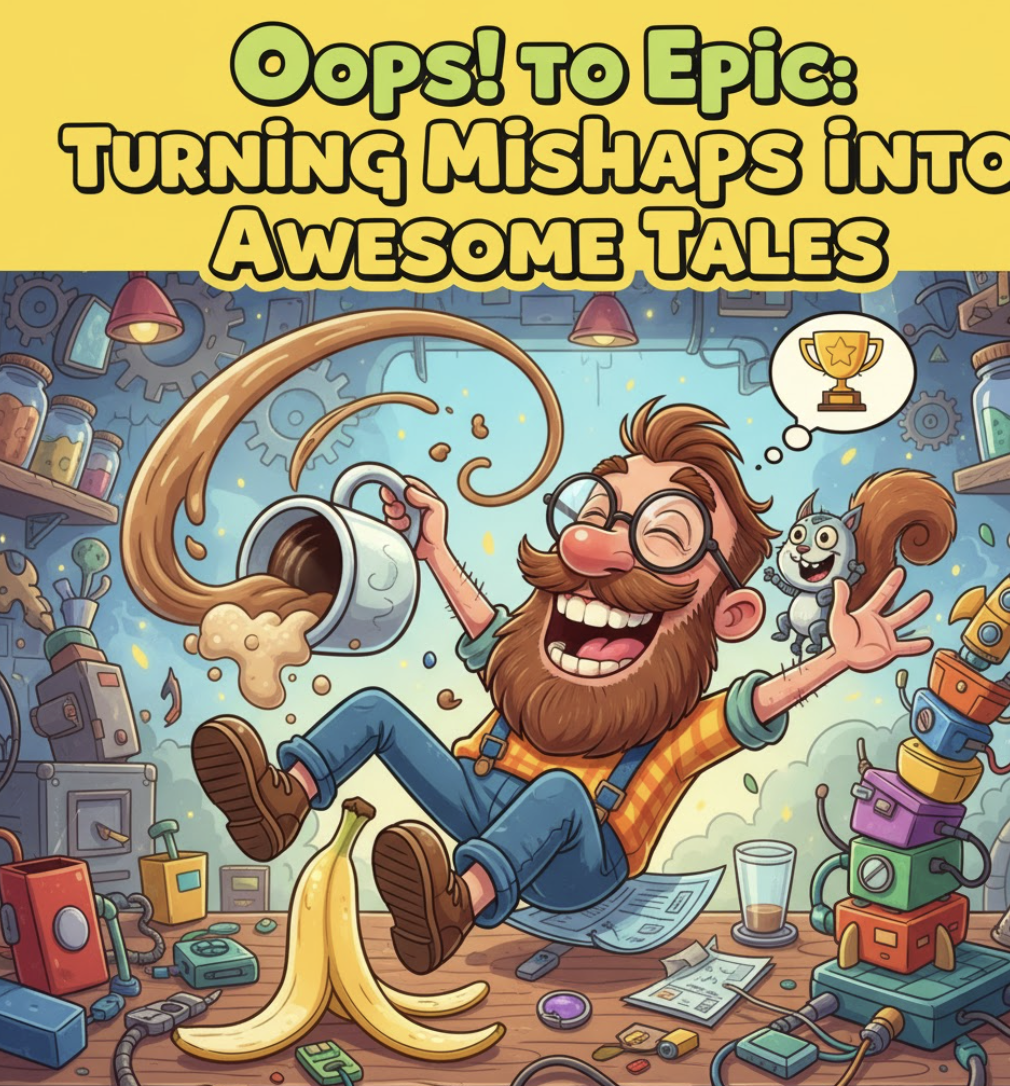
Oops! To Epic: Turning Mishaps into Awesome Tales
Everyone stumbles. Everyone faceplants. Everyone has that moment where they want the earth to swallow them whole. But what if, instead of dwelling on the disaster, we embraced the absurdity and transformed those “oops!” moments into epic tales? What if those mishaps became the building blocks of our most memorable stories, the source of our greatest laughs, and the stepping stones to unexpected success? Buckle up, buttercups, because we’re about to embark on a journey of turning blunders into brilliance, and rewriting our narratives, one hilarious stumble at a time!
From Facepalm to Fame: Mishaps’ Hilarious Potential
The first step in transforming a mishap into an awesome tale is recognizing its comedic potential. Let’s be honest, sometimes the sheer ridiculousness of our mistakes is inherently funny. Instead of cringing, try to view the situation from an outsider’s perspective. Imagine someone else recounting the story – would you be laughing? Chances are, you would! Embrace the absurdity and allow yourself to find the humor in the situation.
Think of countless comedians who have built entire careers on sharing their embarrassing moments. From stand-up routines to sitcoms, the relatable nature of human error is a constant source of entertainment. Learning to laugh at yourself not only lightens the mood but also makes you more approachable and relatable to others. People connect with vulnerability, and sharing your “oops!” moments can be a surprisingly effective way to build relationships.
The key is to own your mistakes. Don’t try to hide or downplay them. Instead, tell the story with enthusiasm and self-deprecating humor. Emphasize the funny details, exaggerate the awkwardness, and don’t be afraid to laugh along with everyone else. The more you embrace the humor, the more likely others are to see the situation as lighthearted and entertaining.
Ultimately, turning a facepalm moment into potential fame (even if it’s just fame among your friends and family!) is about perspective. It’s about choosing to see the humor in the situation and sharing that humor with others. It’s about recognizing that everyone makes mistakes, and that sometimes, the best thing you can do is laugh about it. So, go ahead, embrace your inner comedian and turn those blunders into unforgettable stories!
Stumble, Laugh, Thrive: Re-Scripting Your “Oops!” Moment
Now that you’ve identified the comedic potential, it’s time to actively re-script your “oops!” moment. Instead of dwelling on the negative aspects, focus on crafting a narrative that highlights the positive takeaways. What did you learn from the experience? How did you overcome the challenge? What unexpected benefits arose from the mishap?
This re-scripting process involves reframing the event. For example, if you accidentally sent a silly email to your boss instead of your friend, instead of focusing on the embarrassment, you could frame it as a reminder to double-check your email recipients in the future. Maybe it even led to a surprisingly humorous conversation with your boss that strengthened your relationship!
Think about adding elements of storytelling to your re-scripted narrative. Use vivid language, create engaging characters (including yourself!), and build suspense. The more compelling your story, the more likely people are to remember it and appreciate the lessons you learned. Don’t be afraid to embellish a little (within reason, of course!) to enhance the entertainment value.
The ultimate goal of re-scripting is to transform the “oops!” moment into a source of personal growth and resilience. By actively shaping the narrative, you can gain a sense of control over the situation and turn a potentially negative experience into a positive learning opportunity. This not only helps you move forward but also empowers you to face future challenges with greater confidence and a more optimistic outlook.
When Disaster Strikes, Sparkle: Finding the Awesome Angle
Even in the midst of a seemingly disastrous situation, there’s almost always an awesome angle waiting to be discovered. It might be a hidden opportunity, a surprising connection, or a newfound appreciation for something you previously took for granted. The key is to actively seek out these positive aspects, even when they seem elusive.
One way to find the awesome angle is to ask yourself, “What’s the silver lining?” Even in the darkest of clouds, there’s often a glimmer of hope. Perhaps a canceled meeting led to an unexpected opportunity to spend quality time with loved ones. Maybe a missed deadline forced you to re-evaluate your priorities and streamline your workflow.
Another approach is to look for unexpected connections or collaborations that might arise from the disaster. Perhaps a shared experience of overcoming adversity can forge a stronger bond with colleagues or friends. Maybe a public mishap can lead to unexpected media attention or networking opportunities.
Don’t underestimate the power of gratitude. Even in the midst of a disaster, there are often things to be grateful for. Perhaps you’re grateful for the support of your friends and family, or for the resilience and determination you’ve discovered within yourself. Focusing on these positive aspects can help you maintain a positive attitude and find the strength to overcome the challenge.
Ultimately, finding the awesome angle is about shifting your perspective and choosing to see the possibilities rather than the limitations. It’s about recognizing that even in the face of adversity, there’s always something to be learned, something to be grateful for, and something to be excited about. So, when disaster strikes, don’t despair – start searching for the sparkle!
Mishap Masterpieces: Weaving Wins from Wobbly Starts
Finally, it’s time to transform your re-scripted, awesome-angled “oops!” moment into a true masterpiece. This involves not only sharing your story with others but also using it as a source of inspiration and motivation for yourself and those around you. Your wobbly start can become a powerful testament to your resilience, adaptability, and sense of humor.
Consider how you can use your mishap masterpiece to help others. Perhaps you can share your story in a blog post, a social media update, or even a public speaking engagement. By sharing your experiences, you can inspire others to embrace their own mistakes, learn from their challenges, and find the humor in their own “oops!” moments.
Don’t be afraid to get creative with your storytelling. Use visuals, music, or other multimedia elements to enhance the impact of your message. Turn your story into a short film, a song, or even a piece of art. The possibilities are endless! The more engaging and memorable your masterpiece, the more likely it is to resonate with others.
Remember that your mishap masterpiece is not just about the mistake itself; it’s about the journey of overcoming adversity and emerging stronger on the other side. It’s about showcasing your resilience, your creativity, and your unwavering spirit. It’s about demonstrating that even the most wobbly starts can lead to incredible wins.
So, embrace your “oops!” moments, re-script them, find the awesome angle, and weave them into magnificent masterpieces. Let your mistakes become your greatest assets, your challenges become your greatest opportunities, and your stumbles become your most inspiring stories. The world needs your unique perspective and your unwavering spirit. Go forth and create!
And there you have it! From facepalms to fame, stumbles to success, we’ve explored the art of transforming mishaps into epic tales. Remember, every “oops!” moment is an opportunity to learn, grow, and connect with others. Embrace the absurdity, find the humor, and weave your wobbles into wins. Because in the grand tapestry of life, it’s often the imperfections that make the masterpiece truly beautiful. Now go out there and create your own awesome stories!
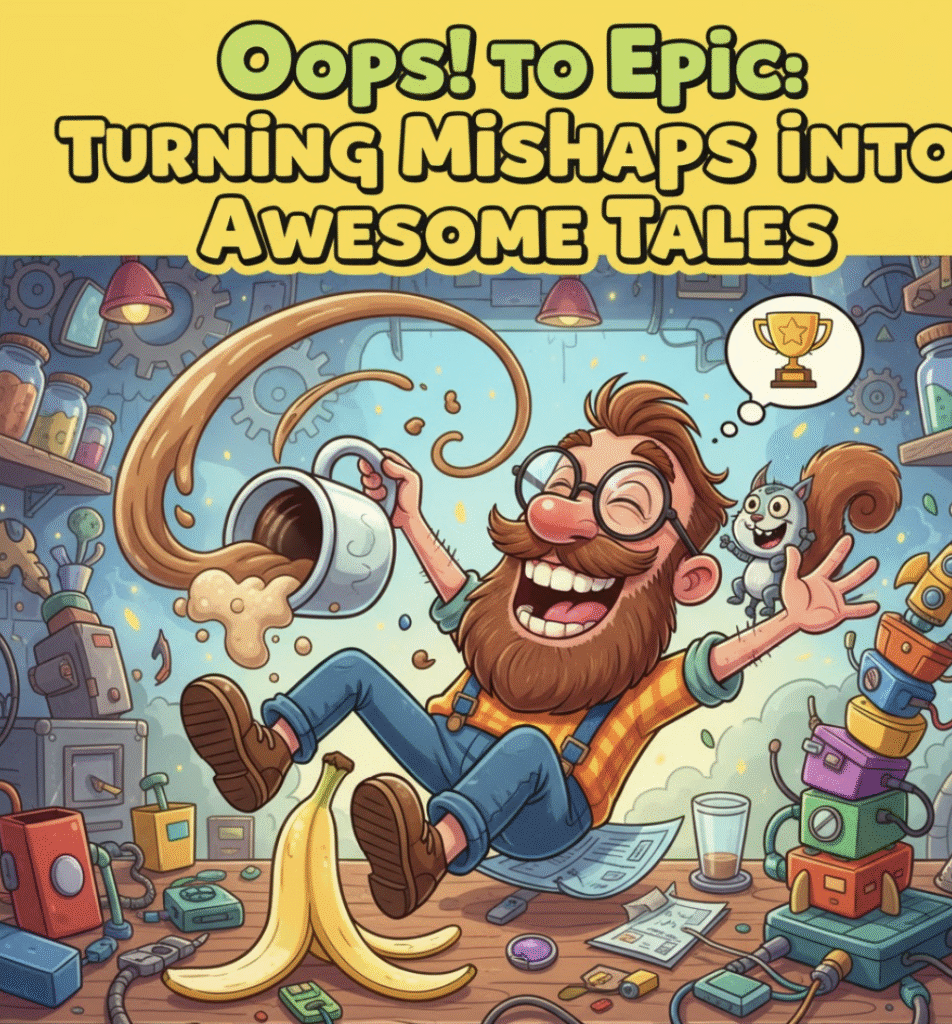
-

Minnesota’s Munchies: A Budding Extract Boom!

cannabis extracts Minnesota, the land of 10,000 lakes, has a new shimmering treasure: not gold, not diamonds, but extracts! Forget fishing for walleye; now folks are reeling in flavor explosions crafted from the state’s burgeoning cannabis industry. From gummies that giggle to tinctures that tantalize, Minnesota’s extract market is blossoming faster than a prairie wildflower in spring. Get ready to explore the exciting world of Minnesota’s munchies, where innovation and deliciousness are the name of the game!
Minnesota’s Green Gold Rush: Extracts are Blooming!
Minnesota’s cannabis landscape is transforming, and extracts are leading the charge. Once a niche product, concentrated cannabis is now grabbing the spotlight, offering potent and flavorful alternatives to traditional flower. Think of it as the artisan coffee of the cannabis world – carefully crafted and bursting with nuanced flavors.
This “green gold rush” is fueled by a growing demand for discreet and convenient consumption methods. Extracts, whether in vape cartridges, edibles, or tinctures, offer a smoke-free experience that fits seamlessly into modern lifestyles. Plus, the precise dosing options appeal to both seasoned enthusiasts and curious newcomers.
Farmers and processors are investing heavily in cutting-edge extraction technologies, ensuring the highest quality and purity. This commitment to excellence is setting Minnesota apart, attracting consumers seeking premium cannabis products. The future looks bright for Minnesota’s extract industry, promising economic growth and a delightful array of choices for consumers.
It’s not just about getting “high;” it’s about wellness, relaxation, and exploration of the plant’s potential. Minnesota is cultivating a responsible and innovative cannabis culture, where extracts play a vital role in providing a diverse and enriching experience for all.
From Farm to Fun: The Flavorful Future of Extracts
The secret ingredient to Minnesota’s extract boom isn’t just the cannabis; it’s the ingenuity and passion of local farmers. These dedicated individuals are cultivating unique strains, each boasting a distinct flavor profile that translates beautifully into extracts. Imagine the taste of a sun-ripened strawberry in a gummy, or the earthy notes of pine in a vape cartridge – all thanks to the careful cultivation of Minnesota’s cannabis farmers.
This “farm-to-fun” approach ensures that consumers are getting the freshest and most flavorful extracts possible. By sourcing directly from local farms, processors can maintain quality control and support the local economy. It’s a win-win situation that benefits both producers and consumers alike.
The future of extracts is undoubtedly flavorful. Expect to see even more innovative flavor combinations and strain-specific extracts hitting the market. From fruity and floral to spicy and savory, there’s an extract out there to tantalize every taste bud. The only limit is the imagination!
And it’s not just about flavor; it’s about the experience. Minnesota’s extract producers are dedicated to creating products that are both delicious and enjoyable. Whether you’re looking for a relaxing evening at home or a fun night out with friends, there’s an extract to enhance the moment.
Munchies Mania: Minnesota’s Extract Scene is Buzzing!
Minnesota’s extract scene is buzzing with excitement, innovation, and a whole lot of deliciousness. From cozy dispensaries to bustling cannabis events, the state is embracing the extract revolution with open arms. The energy is palpable, as consumers discover the joys of concentrated cannabis and the endless possibilities it offers.
The “munchies mania” is fueled by a growing community of enthusiasts who are eager to share their knowledge and experiences. Online forums and social media groups are buzzing with discussions about the latest extracts, dosage tips, and flavor recommendations. It’s a supportive and welcoming community that’s helping to shape the future of cannabis in Minnesota.
Local businesses are also getting in on the action, offering extract-infused treats and experiences. From cannabis-themed cooking classes to infused spa treatments, there’s no shortage of ways to enjoy the benefits of extracts in Minnesota. The creativity is truly inspiring!
This isn’t just a trend; it’s a cultural shift. Minnesota is embracing cannabis as a legitimate industry, creating jobs, boosting the economy, and providing consumers with access to safe and regulated products. The future is bright for Minnesota’s extract scene, and the buzz is only going to get louder.
Extract Yourself: A Taste of Minnesota’s Sweet Success
So, what are you waiting for? It’s time to “extract yourself” from the ordinary and experience the sweet success of Minnesota’s burgeoning extract market. Whether you’re a seasoned cannabis connoisseur or a curious newcomer, there’s something for everyone to enjoy.
Explore the diverse range of extracts available, from classic gummies and tinctures to innovative vape cartridges and concentrates. Don’t be afraid to experiment and discover your favorite flavors and consumption methods. Remember to start low and go slow, especially if you’re new to extracts.
Support local farmers and processors by choosing Minnesota-grown extracts. By doing so, you’re not only enjoying high-quality products but also contributing to the growth of the local economy. It’s a win-win situation that benefits everyone involved.
Minnesota’s extract industry is a testament to the state’s entrepreneurial spirit and commitment to innovation. It’s a story of hard work, dedication, and a passion for creating exceptional cannabis products. So, take a taste of Minnesota’s sweet success and discover the magic of extracts for yourself!
Minnesota’s extract boom is more than just a fleeting trend; it’s a testament to the state’s innovative spirit and growing appreciation for the plant’s potential. From farm to fun, the industry is buzzing with excitement, creating jobs, boosting the economy, and providing consumers with access to safe and delicious products. So, whether you’re craving a sweet gummy, a relaxing tincture, or a flavorful vape, Minnesota’s extracts are ready to tantalize your taste buds and elevate your experience. The future is green, the flavors are bold, and the munchies are calling!